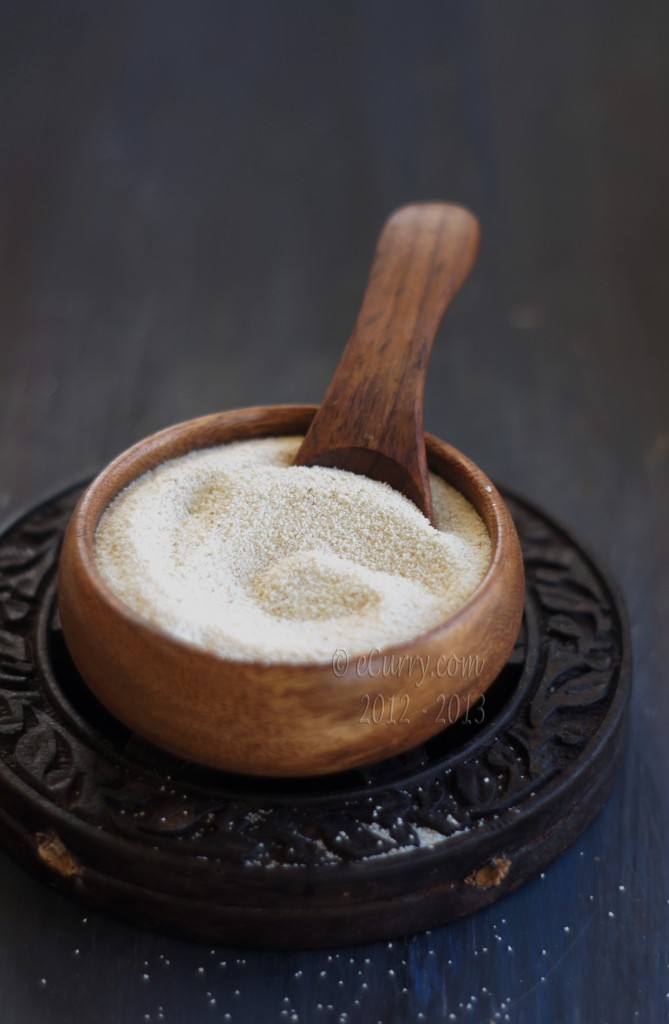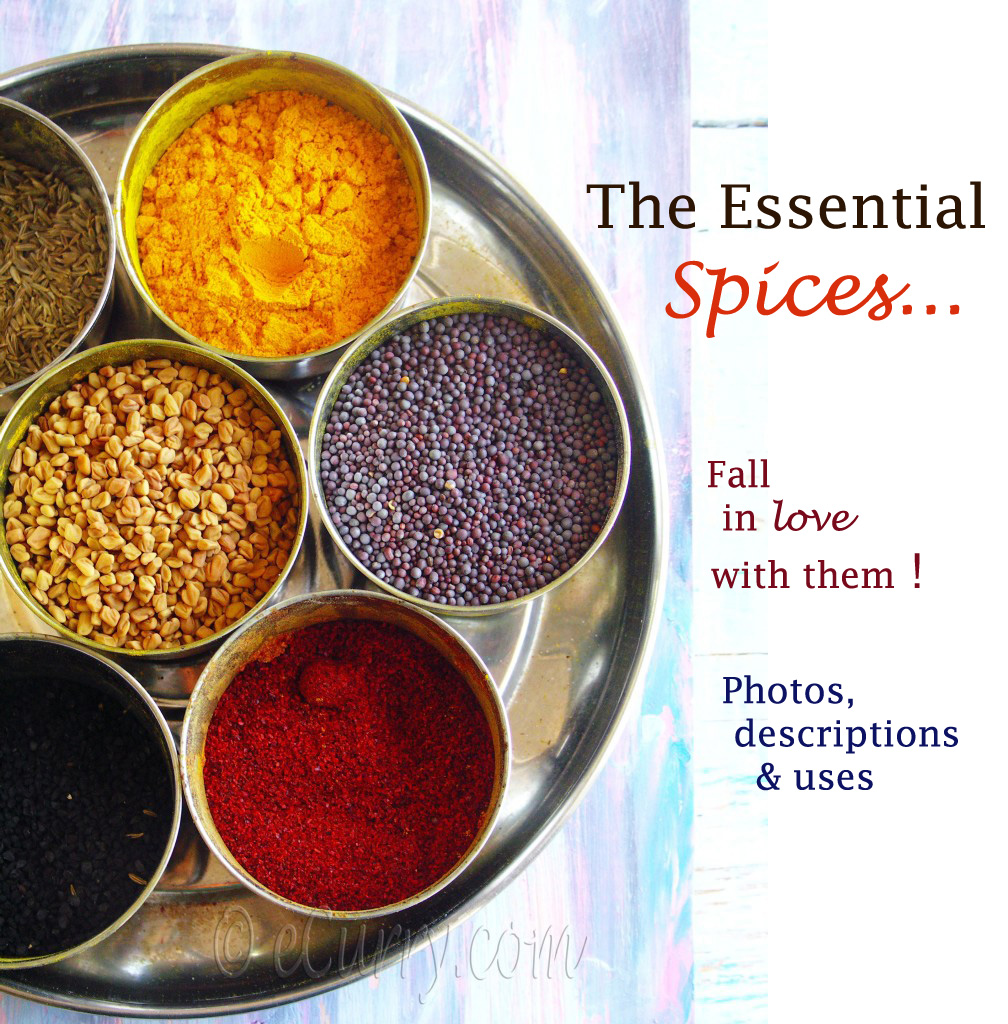
Piping hot semolina with tender medley of vegetables and some spicy chutney is the way to break that fast on a cold and frosty morning.
The simple sustains. We cook this so many times that we do not think before we cook, or pay attention. It gets done like a routine while I am concentrating on other things; nothing is measured, nothing planned…only good old spontaneity takes over. The old comfort of steaming hot pulao loaded with vegetables wraps around and heals.
In most Indian homes, breakfast is elaborate and on the savory side. Parathas, pooris, or pulaos with some chutney or a small side is usually the kind that satisfies. With both my parents working and with me unable to swallow anything more than a few sips of milk before I left for school, the big, fancy breakfasts were left for relaxed weekends only.
A had an oral surgery prior to the winter break last year and that called for smooth, soft food for him for about a few weeks. So we have been cooking Khichuri, Pulao, wholesome nutritious soups and the kinds. While these meals helps the ones who are recovering, they are also just perfect for this weather.
This recipe might remind some of you of upma. Rawa upma? may be… But since I am not familiar about a cuisine I did not grow up with, I am not exactly sure of the intricacies of upma. I have had several kinds of upma, with many different flavors and looks – all cooked by my friends at various times of my life. So I am assuming there are many kinds belonging to regions of southern Indian. My favorite kind of upma is the pure white and light and airy ones, with not so many vegetables, but the tiny green dots of peas. My friend in college would make it this way. I never managed to make it so divinely white.

The recipes of the big breakfasts back home have slowly been moved to main meals here – over the years, we have adapted to quick breakfast (or none for me most of the days) and recipes like this one becomes a very wanted weekend brunch or a weekday lunch.
The one I have here is cooked like any pulao/pilaf with any grains. This is the kind I grew up with – Sooji r Pulao or Nonta Sooji (savory or salty semolina) as it was called at home. The design of this recipe might actually have been originated from the upma and then adapted to suit our style and taste in our home.
This recipe involves only a few easy steps; the initial tempering of the spices, Sautéing the vegetables and adding the grain, mixing everything together and adding water to cook. And then garnish before serving.
There are many kinds of semolina available; the coarse ones what we Indians usually call rawa or sooji works best here. Feel free to use any kind and combination of vegetables.

Semolina and Vegetable Pulao/Pilaf
Ingredients: (serves 4-6 as a side)
- 1 + 1/4 cups coarse sooji/semolina
- 1 cup chopped onion
- 1/2 cup chopped fresh tomato
- 2 – 6 hot green chili pepper, finely chopped
- 3-4 cups vegetables, any kind and as much or as little you want**
- 3 tablespoon oil + 1 tablespoon ghee
- 1/2 teaspoon mustard seeds + 1/2 teaspoon cumin seeds
- 1 tejpatta/Indian bay leaf
- few tablespoon roasted and coarsely chopped peanuts (optional)
- salt to taste
- 2.5 cups hot water, or as much/as little needed
- lemon/lime juice to finish off (optional)
- fresh coriander/cilantro for garnish
**Note: Since I have to have only tender vegetables, I used only peas and potatoes. Any kind of vegetables, including carrots, cauliflower, pepper etc may be used here.
When we are making a complete meal with this pulao/pilaf, we do use a lot of vegetables (less grain, more vegetables)- in a way the semolina coats the vegetables and there is not much extra fluffy ones. Adjust ratio to your needs and likes.
Method:
Light roast the semolina with ghee on a griddle/tawa or pan. Stir frequently and do not allow it to turn brown. it should only be very pale golden. Once it starts changing the color and gets aromatic, remove from heat immediately. Set aside.
Heat the oil in a pan and add the mustard and cumin seeds and the tejpatta. When the seeds sizzle, add the chopped onions and the hot green chilli peppers. Cook until the onion is translucent and soft and starts to turn brown on the edges.
Add the tomatoes and salt and stir well for all to combine. Cook until soft and mushy.
Add the vegetables, the tougher ones first. So if you are using potatoes and carrots and they need to be cooked through, add them first and cover the pan and lower the heat. Cook until they are tender. Add the other vegetables and do a quick stir fry.
Add the roasted semolina to the pan, only a little at a time, stirring constantly to prevent any lumps from forming. Slowly add water
Simmer and cook till the pulao is thick and cooked through/softened. Turn off the fire and keep covered for a while – about 10 minutes.
Uncover and squeeze the lime juice and toss. Fluff well and break up lumps.
Sprinkle the chopped coriander and roasted peanuts if you are using. Serve piping hot with ketchup/hot sauce/chutney.

Related Posts:
- Bhuna Khichuri – an Indian Risotto?
- Semolina and Almond Halwa
- Peanuts & Brown Rice with Asian Dressing
- Vegetable Au Gratin
- Vegetable Pulao
- Zafrani Kofta Pulao: Saffron and Caramelized Onion Pilaf with Meatballs












I really love the idea! This pilaf is so original and looks really flavorful. I’ll have to try it soon…
Cheers,
Rosa
We call this vegetable upma… almost the same as mom makes it , minus the bay leaf. Looks so delicious 🙂
Wow! That sooji upma is beautiful! Love all your clicks.
Yes Soma, upma has variation on each household. Some make it like biryani with bold whole spices while some may make it with simple spices. I like your version. They look so comforting for sure.
Looks good but how is this different from standard South Indian upma w/veggies?
Hi Anisha, I think the difference is in the seasonings used. As I have mentioned in the post, even the upma has differences depending who is making it and which region of the southern states it belongs to. Here is where I asked a friend: http://www.facebook.com/permalink.php?story_fbid=322682421166978&id=159731510779233&comment_id=1813493
she uses hing, mustard, chana dal and ginger for the tempering… which would obviously change the flavors. The process in both remains the same.
Nonta shooji and gorom gorom chaa is what I made almost every weekend when I was staying alone in Bangalore 🙂
The dish looks so pretty.
my fav lunch item
http://great-secret-of-life.blogspot.com
Pics are so good and so the recipe…
I have been cooking for a while and I must say that this is going to be the first time time I am going to try cooking Veg with Semolina. I will keep you inform about the result.
By the way thank you very much for all those good and nice recipe that I used to receive by email.
Keep it up
Regards
Dany (from Mauritius)
Hi Soma,
Amader bariteo “nonta” suji aar “misti” suji bole i ei dui dish ke differentiate kora hoto..Honestly ma preferred the misti version because of its “simplicity” (hopefully ma tomar blog e amar comment porche na!!;-))..I never liked it.
This recipe is also a standard weekend brunch for us. Hubby makes a nice one…
cheers,
d
Well, it is hardly frosty here – it’s going to be a burning 39C tomorrow! But I’m still keen to try this gorgeous recipe. We always have semolina on hand, and as I usually use it for Arabic sweets, it’ll be wonderful to use it in a totally new way. I’m in love.
hey looks upma right!! nice
Nonta shooji is almost unheard of in Bangladesh. However, I’ve tried few versions of upma and love them. Great clicks!
Beautiful pics…as always!!
I love! I love. With hot chaa. Dont call it nonta shuji, but yes, whats in a name. Love your photographs, as always.
Thank you Madam 🙂
great blog post about the Semolina and Vegetable Pulao/Pilaf, i really like this.
How interesting! I just reesalid that we mainly use semolina for sweet dishes and I’ve never seen it as an ingredient in savoury dish. Looks similar to veggie coucous and really delish!Thanks for sending it my way Happy New Year to you and your family!
[…] eCurry – Semolina and Vegetable Pulao/Pilaf […]